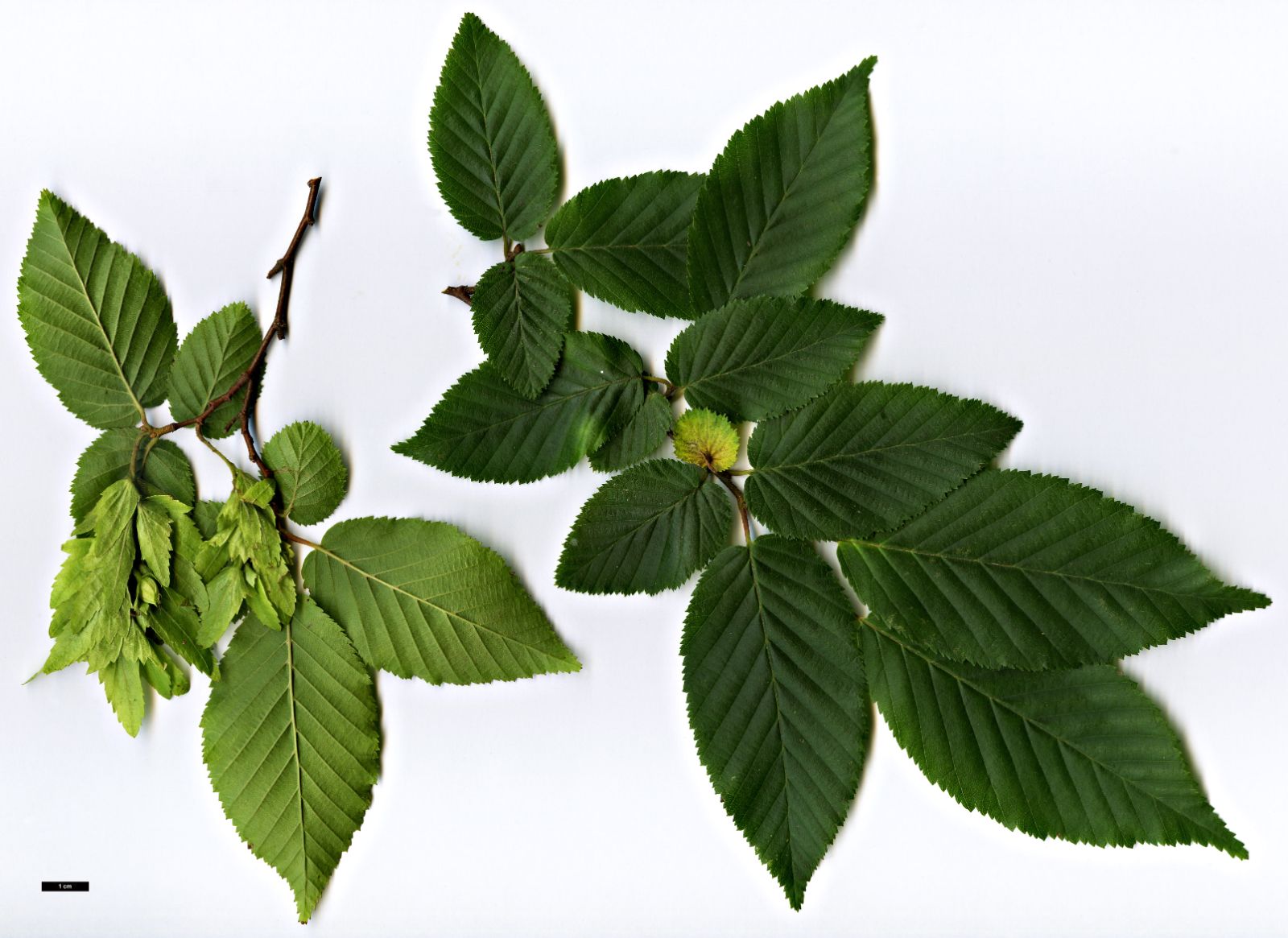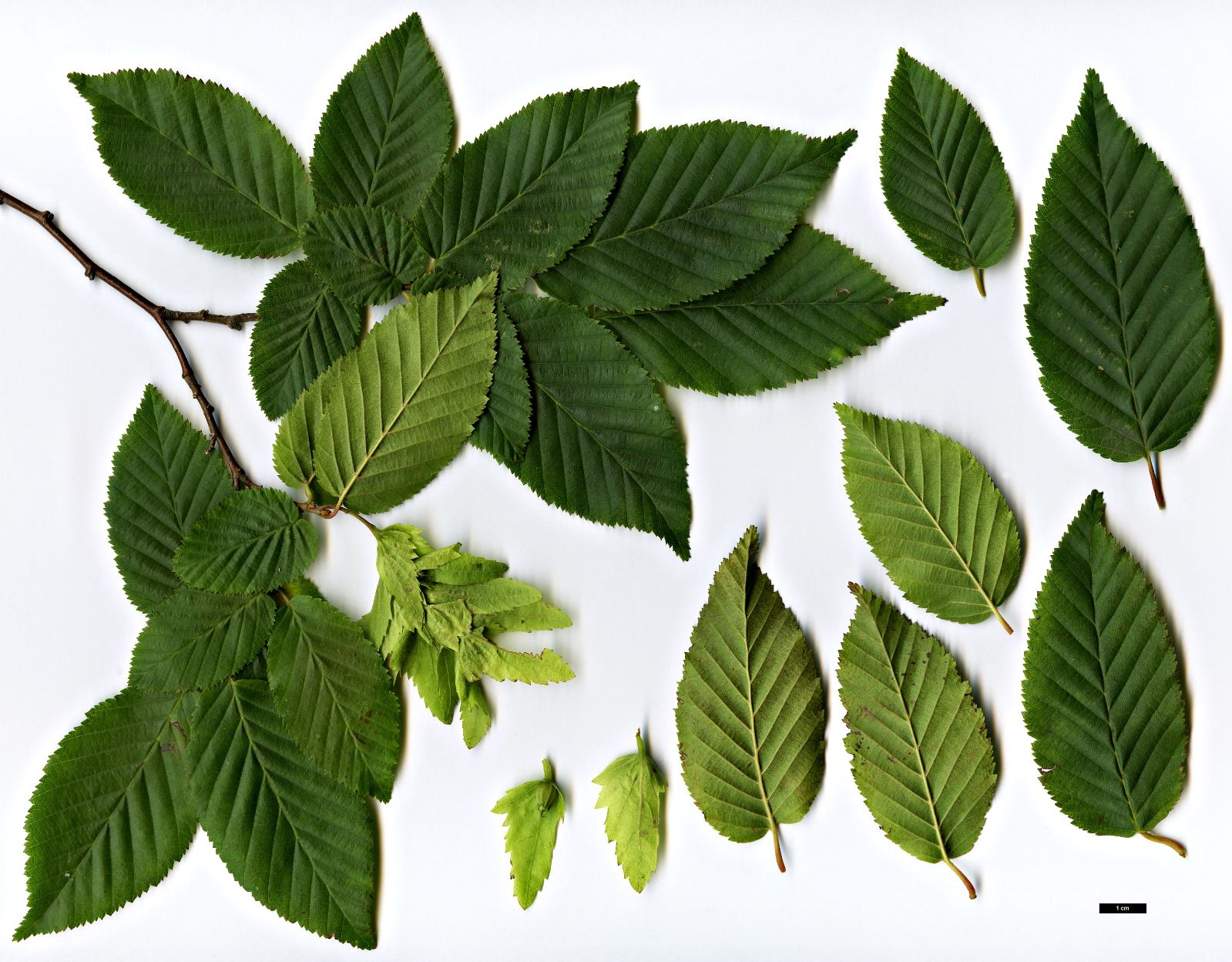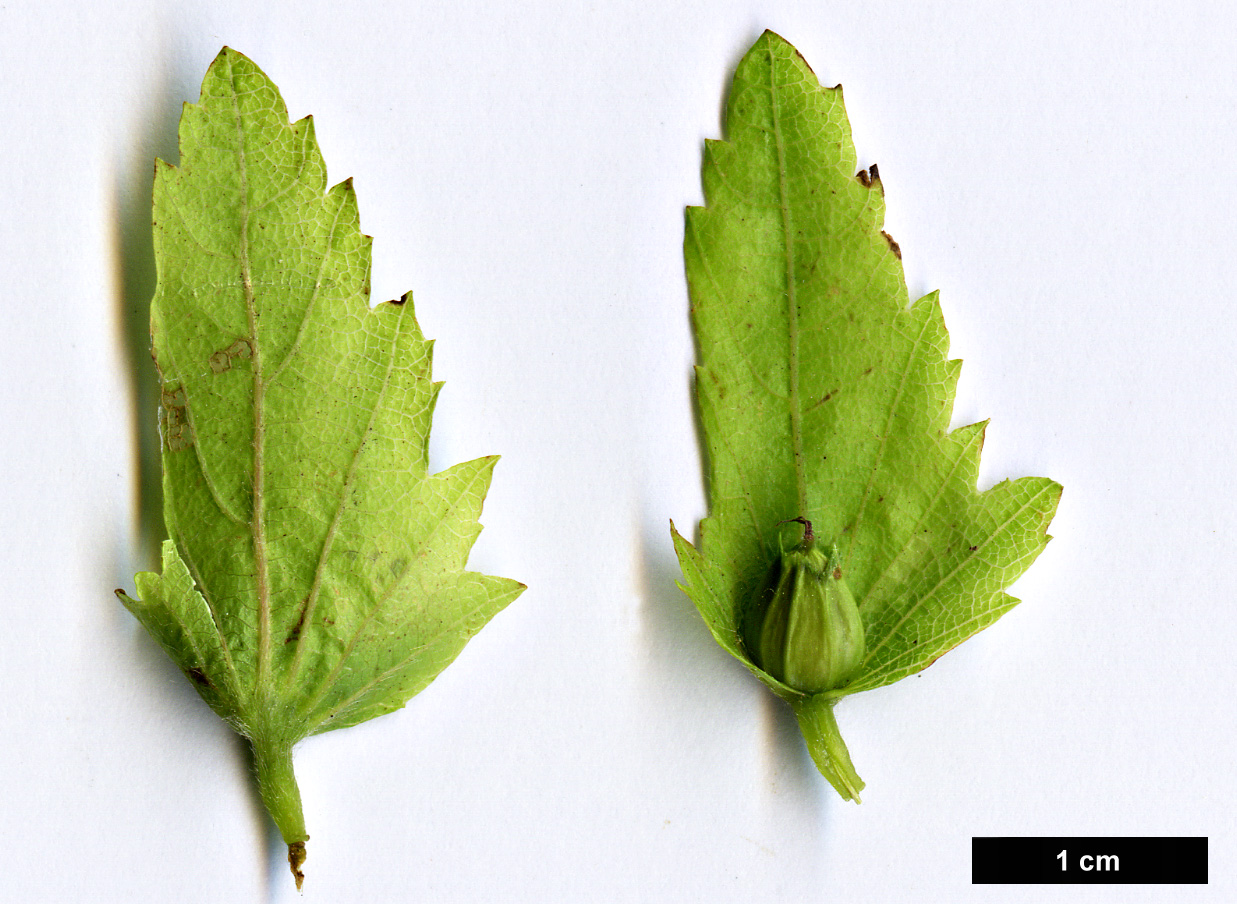Carpinus × schuschaensis
Sponsor
Kindly sponsored by
Lord and Lady Aldington
Credits
Owen Johnson (2022)
Recommended citation
Johnson, O. (2022), 'Carpinus × schuschaensis' from the website Trees and Shrubs Online (treesandshrubsonline.
Genus
Common Names
- Shusha Hornbeam
Other taxa in genus
- Carpinus betulus
- Carpinus caroliniana
- Carpinus cordata
- Carpinus faginea
- Carpinus fangiana
- Carpinus fargesiana
- Carpinus hebestroma
- Carpinus henryana
- Carpinus japonica
- Carpinus kawakamii
- Carpinus laxiflora
- Carpinus londoniana
- Carpinus mollicoma
- Carpinus monbeigiana
- Carpinus omeiensis
- Carpinus orientalis
- Carpinus polyneura
- Carpinus pubescens
- Carpinus rankanensis
- Carpinus shensiensis
- Carpinus tropicalis
- Carpinus tschonoskii
- Carpinus turczaninovii
- Carpinus viminea
Tree to c. 20 m of vigorous and upright habit, but sometimes shrubby and tangled. Bark grey, rather smooth. Twigs brown to shining red in sun, with silky hairs at first. Leaves ovate, 5–10 × 2–5 cm; base slightly cordate; apex short-pointed; undersides with silky hairs along the veins, lateral veins in 10–14 parallel pairs; margin irregularly double-serrate; petiole pubescent, red in sun, 6–10 mm long. Fruiting catkin c. 7 cm long; fruit-bracts 2–3 cm long, asymmetrical, obscurely lobed on both sides. (Bobrov 1970; Edwards & Marshall 2019).
Distribution Armenia Azerbaijan Georgia Iran Russia In the Caucasus mountains
USDA Hardiness Zone 5-6
RHS Hardiness Rating H6
Conservation status Not evaluated (NE)
This hornbeam is now generally understood have arisen from introgression between Carpinus betulus and C. orientalis in the Caucasus mountains, and is named after the city of Shusha in the disputed region of Nagorno-Karabakh. It was probably first introduced to the west in 1972 by Roy Lancaster and Ann Ala from the Elburz mountains in Iran (L&A 5) (Clarke 1988). Plants from this seed have reached 15 m at the Sir Harold Hillier Gardens by 2017 (Tree Register 2022); they have an upright habit, though in the wild this hornbeam is often described as a dwarf, thicket-forming shrub (Clarke 1988). L&A 5 has also grown vigorously to 13 m at one of the late Maurice Mason’s Norfolk gardens, while a more recent collection made on an IDS tour south of the Caspian sea in Iran is already 10 m tall at Maurice Foster’s White House Farm Arboretum in Kent (Tree Register 2022). However, a specimen planted by Christine Battle at the Congrove Arboretum near Bath seemed to want to remain a three-metre bush in 2014 (Tree Register 2022).
Combining the potential vigour of Carpinus betulus with greater heat-tolerance, C. × schuschaensis is considered a promising urban tree in the south-eastern United States (Dirr 2009), and it thrives at the Dawes Arboretum in Ohio (USDA hardiness zone 6a) (Dawes Arboretum 2022). In 2022 it was also offered in Italy (Floricoltura Lampugnani 2022). Reasons to grow this plant in north-west Europe are more obscure: like many hybrids, it tends to dilute the best features of its parents – the daintiness of C. orientalis and the potentially majestic size and longevity of the wild C. betulus – without offering anything new. This said, it is available like most rare hornbeams from more than one specialist nursery in the UK (Royal Horticultural Society 2020).




